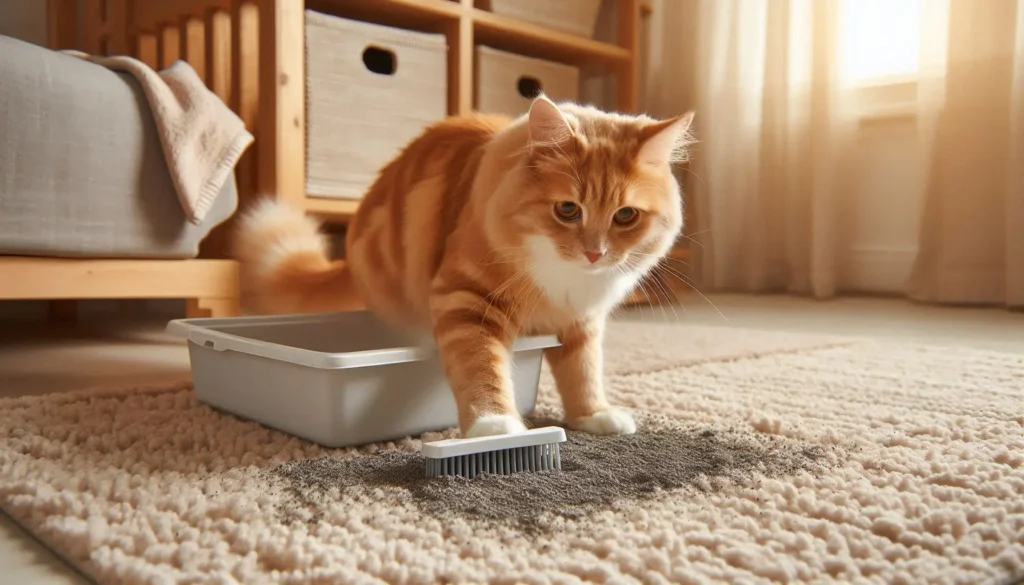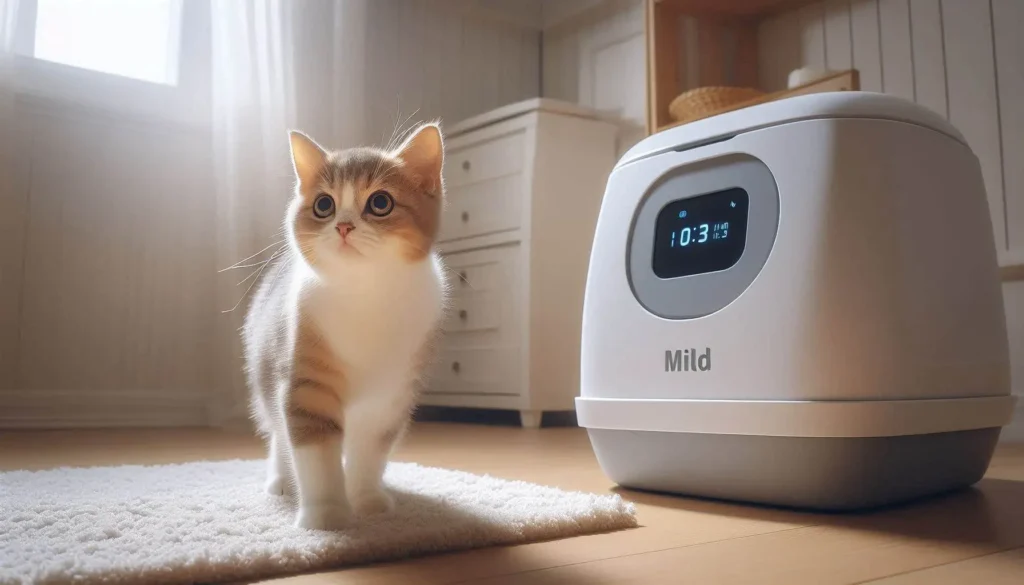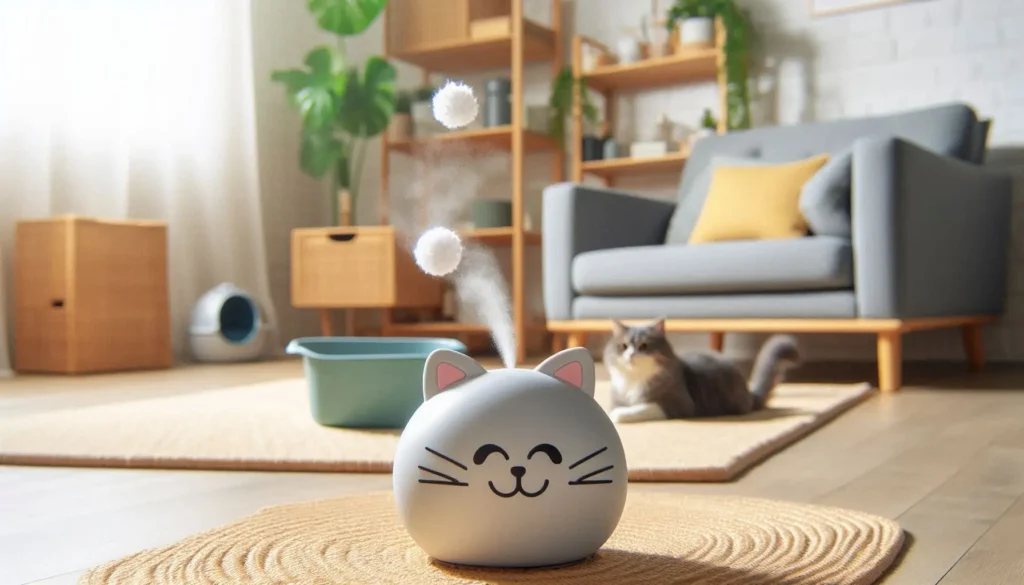How to get cat pee out of bed? here's what not to do
We independently research, review, and recommend the best products—If you buy something through our links, we may earn an affiliate commission.

Accidents happen, and sometimes those accidents involve our feline friends mistaking our cozy beds for their personal litter boxes.
But fear not, pet parent! While the initial shock of discovering pee on your bed might be enough to induce a mini-meltdown, with the right approach, you can restore your bedding to its original state.
In this article, we’ll go through detailed steps so you’ll be equipped to effectively remove cat pee from your bed and restore it to its original condition.
So, how to get cat pee out of bed?
The quicker you remove it the better
Discovering cat pee on your bed can be distressing, but it’s crucial to act swiftly and calmly. The longer the urine sits, the more it permeates into the fabric, making it harder to remove. Taking immediate action not only helps prevent the stain from setting but also minimizes the lingering odor. So, take a deep breath, gather your cleaning supplies, and let’s tackle this together.
Gather Your Supplies
Before you begin cleaning, gather all the necessary supplies. You’ll need absorbent paper towels or a clean cloth to soak up the urine, white vinegar for neutralizing the odor, baking soda for deodorizing, and your regular laundry detergent for washing the bedding. Having everything ready beforehand will streamline the cleaning process and ensure you’re fully prepared to tackle the task at hand.
resist the urge to rub
When it comes to cleaning up cat urine, gentle blotting is key. Use absorbent paper towels or a cloth to blot the urine, starting from the outer edges of the stain and working your way towards the center. Avoid rubbing the area, as this can spread the urine and deepen the stain. Blotting helps soak up the liquid effectively without pushing it further into the fabric, making it easier to remove.
Neutralize with Vinegar
After blotting up as much urine as possible, it’s time to neutralize the odor with a vinegar solution. Mix one part white vinegar with two parts water in a spray bottle and generously spray the affected area. Vinegar is highly effective at neutralizing the ammonia in cat urine, which is what causes the strong odor. Allow the solution to sit for 10–15 minutes to penetrate the fabric and combat the odor at its source.
Deodorize with Baking Soda
Once the vinegar solution has had time to work its magic, it’s time to deodorize the area with baking soda. Sprinkle a generous amount of baking soda over the damp spot, ensuring it covers the entire area evenly. Baking soda acts as a natural deodorizer and helps absorb any remaining moisture and odor. Leave the baking soda to sit for at least 30 minutes, or until it’s completely dry and has absorbed the odor.
it's time to wash the bedding
With the stain and odor neutralized, it’s time to launder the bedding. Check the care label on your sheets for washing instructions, and select the appropriate water temperature and wash cycle. Use your regular laundry detergent and consider adding a cup of white vinegar to the rinse cycle to further eliminate any lingering odors. Washing the bedding thoroughly ensures that any traces of urine are completely removed, leaving your linens fresh and clean. After washing, allow your bedding to air dry completely. If possible, hang it outdoors in direct sunlight, as sunlight acts as a natural bleaching agent and can help fade any remaining stains.
How can I prevent this from happening again?
Keep the litter box clean and accessible
One of the most effective ways to prevent your cat from urinating outside the litter box is to keep the box clean and easily accessible. Cats are naturally clean animals and prefer to use a tidy litter box. Make it a habit to scoop the litter box daily to remove waste and clumps. Additionally, consider using unscented litter. Ensure the litter box is placed in a quiet, low-traffic area of your home where your cat feels safe and comfortable using it.
Consider Multiple Litter Boxes
If you have multiple cats or a multi-level home, providing more than one litter box can help prevent territorial disputes and ensure each cat has easy access to a box when needed. Place litter boxes in different locations throughout your home to accommodate your cats’ preferences and reduce competition for resources.
Address underlying medical issues
If your cat begins urinating outside the litter box, it’s essential to address the issue promptly to prevent it from becoming a recurring problem. Schedule a veterinary check-up to rule out any underlying medical conditions that may be causing your cat’s behavior. Medical issues such as urinary tract infections, bladder stones, or kidney disease can cause discomfort and lead to inappropriate elimination.
Maintain a Consistent Routine
Cats thrive on routine and may become stressed or anxious in response to changes in their environment or daily schedule. To help prevent litter box issues, maintain a consistent routine for feeding, playtime, and litter box maintenance. Keep the litter box in the same location, and avoid making sudden changes to your cat’s environment whenever possible. Gradual introductions to new experiences or household additions can help minimize stress and reduce the likelihood of litter box problems arising.
Conclusion
it’s essential to remember that patience and persistence are your greatest allies in maintaining your cat’s litter box habits. By diligently following these steps and proactively implementing preventive measures, you can significantly reduce the likelihood of future accidents and provide your feline companion with the necessary resources to meet their biological needs. Your commitment to their well-being will not only foster a harmonious relationship but also ensure a happy and healthy environment for both you and your beloved cat.

Frequently Asked Questions
According to the 2022 ISFM/AAFP Cat Friendly Veterinary Environment Guidelines published in the Journal of Feline Medicine and Surgery, the litter box should be 1.5 times the length of your cat from the nose to the tip of the tail. Whereas the width should be equivalent to your cat’s length, the tail is not included. A cat that is about 18 inches long needs a litter box that measures 27” long by 18″ wide. A litter box that most likely doesn’t exist out there. That is why it is best to select the largest and nicest litter box for your beloved cats.
It is recommended that you use a maximum of 2 inches to 4 inches of litter in your litter box. If there are numerous cats using the litter box, you’ll need 3 to 4 inches of litter to absorb all that urine and clump around.
In fact, anything less than 2 inches will cause unpleasant odors to develop as well as a high probability of inappropriate elimination. On the other hand, too much litter will lead to a mess since most cats will simply kick it outside.
Research was conducted and published in the Journal of Feline Medicine and Surgery regarding this subject. The results showed that out of 28 different cats, 4 showed a preference for covered litter boxes and 4 for open litter boxes. The rest of the cats were happy to use any type of box they provided as long as it was well-cleaned.
This only shows that our cats have unique preferences, and only by getting to know them will we be able to fulfill their needs in the best way possible.
If you have one cat at home, you’ll most likely need to change clumping cat litter every 2–3 weeks. However, if you’re using a non-clumping litter, you’ll have to change the litter completely twice a week.
If you have an automatic litter box, you can perform a deep cleaning once a month. Unless, of course, there is a problem of feces scattering or building up inside the litter box. You will need to clean it more often in that case.
If you have a manual litter box, the litter should be scooped and cleaned at least twice a day.
Cats love to have their cat litter boxes in a corner that is calm, private, and accessible. You’ll also need to keep food away from this spot in order to leave this space dedicated to sanitary activities.



